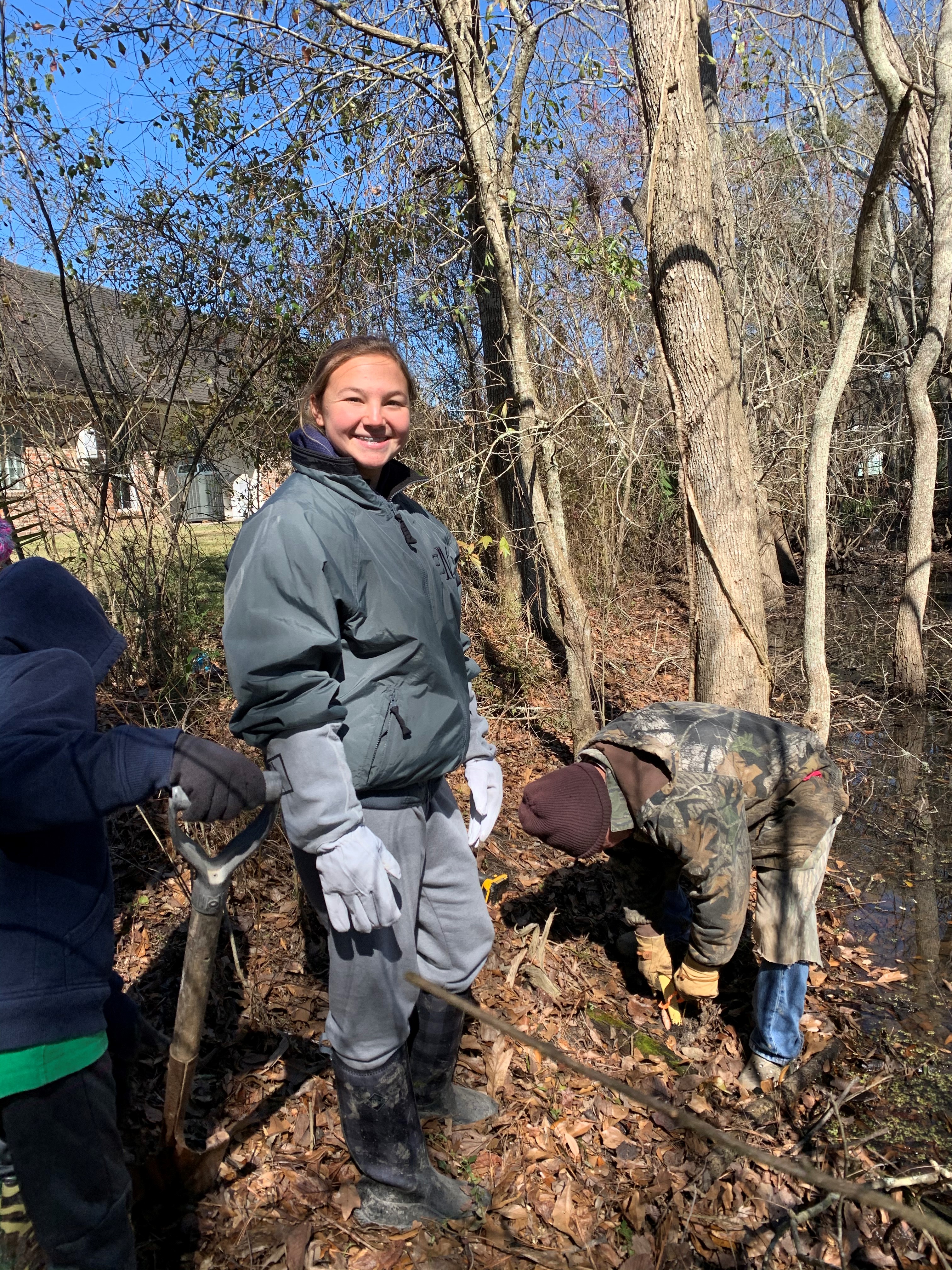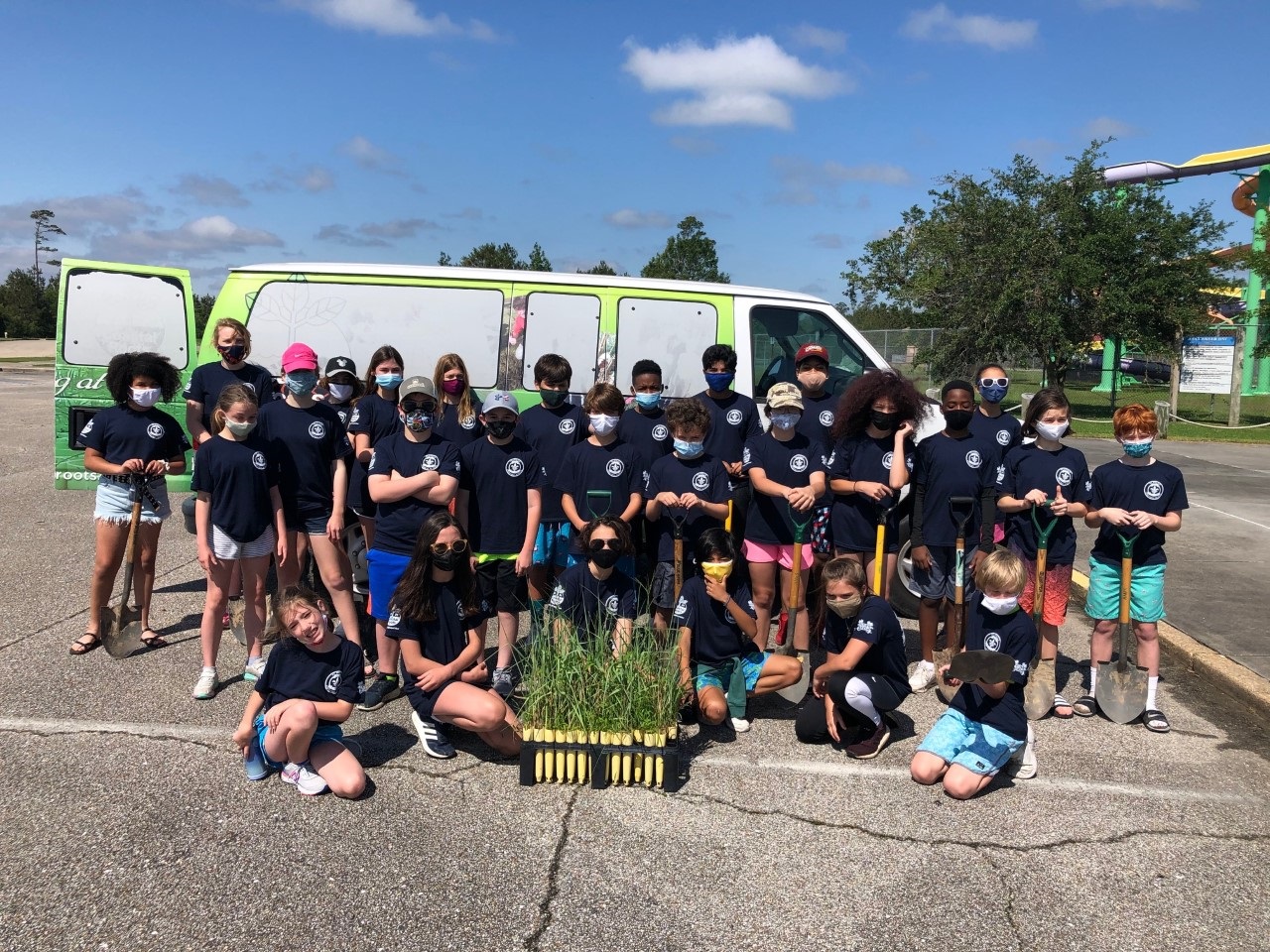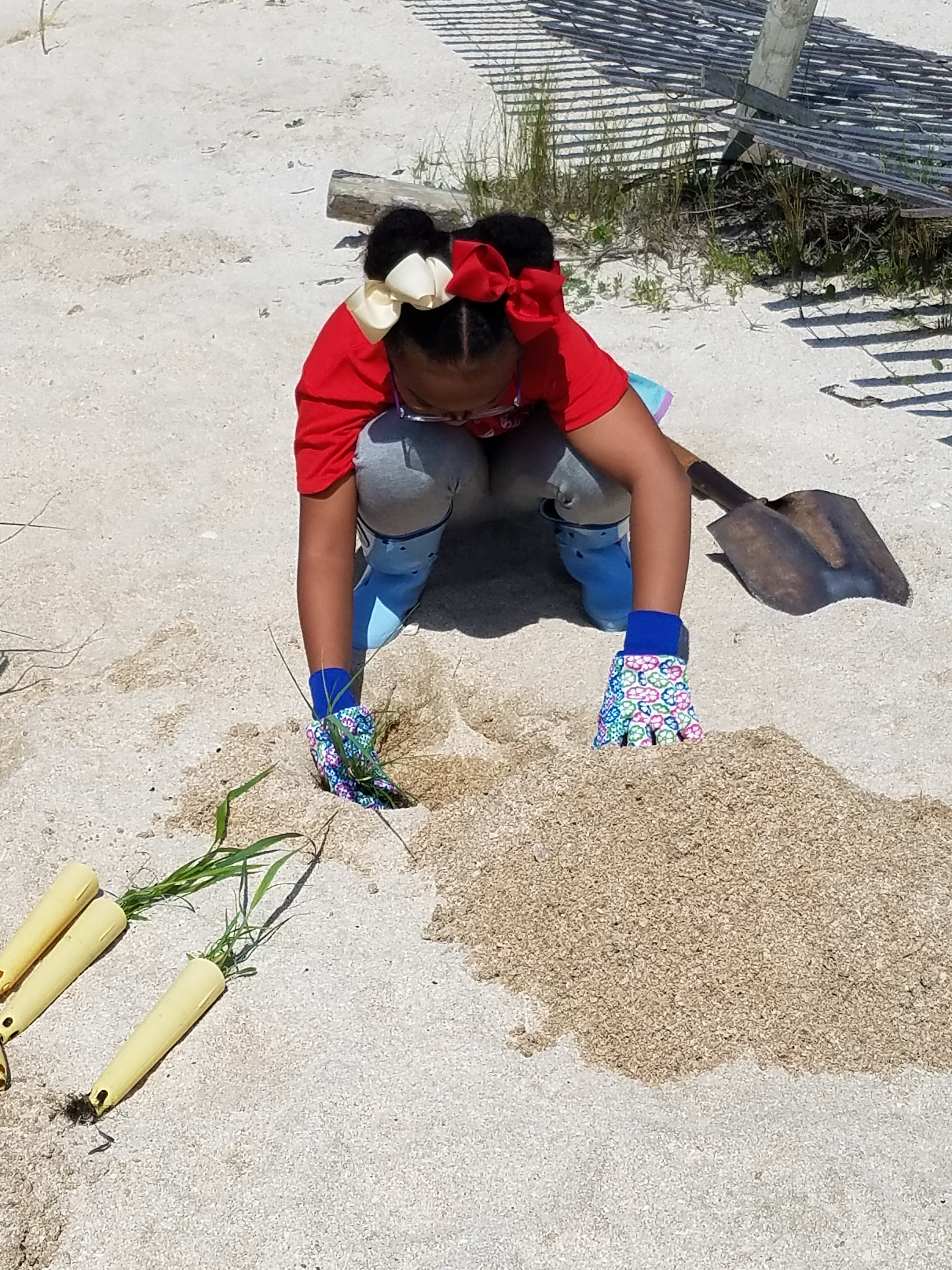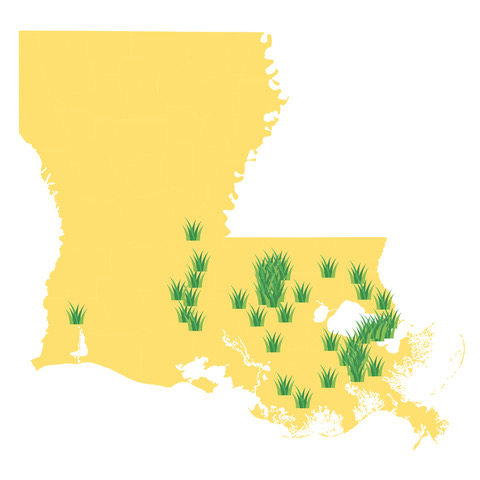Raising Coastal Stewards
With a little help from LSU, more than 26,000 Louisiana school kids have transplanted nearly 200,000 native plants in response to the state’s coastal land loss crisis

Eighth grade Pierre Part Elementary student Ella Mabile plants bald cypress and nuttall
oak trees with her family that she and her classmates grew at school as part of the
LSU Coastal Roots program. Photo Credit: Ella Mabile
Hundreds of miles of marshes and barrier islands buffer the state from the Gulf of Mexico. These vast, wild wetlands protect people, homes, and businesses on the coast as well as inland.
“Contrary to what some might think, our coastal land loss is mostly interior marsh land loss,” said Pam Blanchard, LSU Coastal Roots program director and LSU School of Education associate professor.
The wetlands also serve as protective nurseries for juvenile fish before they grow large enough to swim out to the Gulf of Mexico, which plays a part in the state’s vital seafood industry. In part, storms have eroded the wetlands. The land also sinks, or subsides, which naturally occurs in deltas. And building levees along the Mississippi River has cut off the flow of mud and sediment that had naturally rebuilt and offset subsidence in the coastal wetlands over millennia.
Today, as Louisiana’s coastal wetlands disappear into the open ocean, so does our protection from hurricanes, storm surge, and flooding that impacts everyone.
“It was amazing to me that people did not realize how vulnerable coastal Louisiana was and still is,” Blanchard said. “I realized people just didn’t get that it really is a crisis.”
Her solution is to continue to invest in education and restoration efforts with elementary, middle, and high school youth. For the past 21 years, Blanchard has run the LSU Coastal Roots program. “I know that if you can get kids outside and you can show them and have them do something that’s productive, then it brings what you’re teaching in the classroom to life. It makes it real,” she said.
“I know that if you can get kids outside and you can show them and have them do something that’s productive, then it brings what you’re teaching in the classroom to life. It makes it real.” — Pam Blanchard, associate professor and co-director of Coastal Roots
Also, by bringing children to see Louisiana’s eroding barrier islands and disappearing wetlands, it makes them aware and more sensitized to the issues, which helps make them informed citizens.
 St. Paul's Episcopal school students from New Orleans set out to plant during the
500th Coastal Roots planting trip in 2021.
St. Paul's Episcopal school students from New Orleans set out to plant during the
500th Coastal Roots planting trip in 2021.
Photo Credit: Pam Blanchard, LSU
“It’s important to save the wetlands because we want them to be there when we have kids,” said a Zachary Community Schools student after participating in the LSU Coastal Roots program. Currently, they are working with 48 elementary, middle, and high school teachers across the state whose students have built Coastal Roots nurseries at their schools to grow important native beach grasses and trees. Blanchard then leads a hands-on fieldtrip to a coastal restoration site within about an hour’s drive from the school where the students plant their crop of native plants they’ve grown over the past year. To-date, Blanchard has taken more than 26,000 Louisiana students to transplant their native tree saplings or grass plugs at coastal restoration sites all over the state.
This year, despite the pandemic, Blanchard led her 500th Coastal Roots field trip.
“The program is very beneficial not only because what is planted is tailored to the needs of the area based on the site location, but also because the planting of the trees is being done by school kids. And it educates the students on planting, the outdoors, and the benefits of the trees,” said Fouad Harb, Fontainebleau State Park manager. Harb has seen Coastal Roots in action first-hand when he was the park manager at Grand Isle State Park and now as the Fontainebleau State Park manager. “I am impressed with the initiative and its multilayer benefits,” he said.
“The program is very beneficial not only because what is planted is tailored to the needs of the area based on the site location, but also because the planting of the trees is being done by school kids. And it educates the students on planting, the outdoors, and the benefits of the trees.” — Fouad Harb, Fontainebleau State Park manager.

A Rollins Place Elementary school student plants bitter panicum dune grass at Rutherford
Beach in Cameron Parish.Photo Credit: Pam Blanchard, LSU
Blanchard is very frank with the students when they are at the restoration sites.
“I try to explain to the kids that, ‘We're putting a lot of beach dune grass out here on Grand Isle and it may take hold and grow, or the wave energy may be just too much for it. But if we don't do anything, even little waves are going to take something that’s precious to us,’” she said.
Blanchard grew up in Port Arthur, Texas and has lived near the Gulf Coast her entire life. Coastal and environmental stewardship is a way of life for her, but she knows it is not that way for everyone.
“Once our coastal land loss starts hitting our pocketbooks, though, people are going to start noticing,” she said.
This year, students at Pierre Part Elementary in Assumption Parish were not allowed to go on their Coastal Roots restoration planting fieldtrip due to the pandemic. However, they had tended to and grown native trees at their school’s nursery all year. So, science teacher John Giambrone had his students take the trees home to plant with their families at sites that needed restoration in and around the Atchafalaya basin, where the students live.
“Environmental stewardship can only be taught through hard work, meaningful experiences, and the feeling of belonging to something greater than you are as one individual,” Giambrone said.
He and his school have been Coastal Roots participants since the beginning. “It has become so ingrained into our school that students coming up through the grades can't wait to participate in the program. I cannot picture the school of Pierre Part Elementary without it,” he said. “Many students comment on how the feeling of making a difference, no matter how small, is the first step in making a change for a better community or state.”
“It has become so ingrained into our school that students coming up through the grades can't wait to participate in the program. I cannot picture the school of Pierre Part Elementary without it,” he said. “Many students comment on how the feeling of making a difference, no matter how small, is the first step in making a change for a better community or state.” — John Giambrone, teacher at Pierre Part Elementary

Coastal Roots By the Numbers
The LSU Coastal Roots Program has been partnering with Louisiana schools and coastal restoration sites for 21 years:
26,957 student stewards (9,311 elementary school students, 12,672 middle school students, 4,974 high school students)
194,336 native trees and grass plugs planted
500 restoration planting trips
1,799 teacher collaborators
3,940 community chaperones
Each grass icon represents one participating Louisiana school.